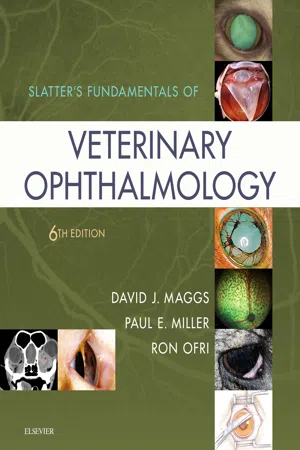
Slatter's Fundamentals of Veterinary Ophthalmology E-Book
Slatter's Fundamentals of Veterinary Ophthalmology E-Book
- 584 pages
- English
- ePUB (mobile friendly)
- Available on iOS & Android
Slatter's Fundamentals of Veterinary Ophthalmology E-Book
Slatter's Fundamentals of Veterinary Ophthalmology E-Book
About this book
**Selected for Doody's Core Titles® 2024 with "Essential Purchase" designation in Veterinary Medicine** Learn to recognize, diagnose, and manage a wide range of common ocular conditions with Slatter's Fundamentals of Veterinary Ophthalmology, 6th Edition. This thoroughly updated text provides the latest, most practical information on structure and function of the eye, the ophthalmic examination and diagnostic techniques, medical and surgical management of ocular disease, and management of ocular emergencies. Enhanced and logically organized coverage includes dogs, cats, horses, livestock, birds, and exotic pets. In addition, over 1, 000 color photos and illustrations accurately depict ocular conditions encountered in practice and demonstrate diagnostic and surgical techniques. Edited by three of the most revered authorities in the field of veterinary ophthalmology, this reference is an essential aid to successful veterinary practice and education.- Clinical Tips boxes such as "The Controversy Remains", "Did You Know?", "Look Again", and "Note" offer helpful practice advice and facts.- UPDATED Additional species added to the exotics chapter include birds, small mammals, and others.- A team of internationally respected veterinary ophthalmologists provide comprehensive, clinical expertise in all areas needed to evaluate, diagnose, manage, and monitor a patient with ophthalmic disease.- Practical, clinically focused coverage provides a one-stop diagnostic guide to ophthalmic disease in small and large animals including dogs, cats, horses, livestock (cows, sheep, goats), birds, and exotic pets.- Chapters on equine, livestock, and exotic pet ophthalmology written by specialists in these fields for the most clinically relevant coverage.- NEW! Chapter on ophthalmic surgical techniques describes instrument and suture choice, patient positioning, surgical preparation, and general techniques.- NEW! Additional drawings depict ophthalmic surgeries.- NEW! In-depth equine and livestock ophthalmology content- NEW! Suggested reading lists included at the end of each chapter.
Frequently asked questions
- Essential is ideal for learners and professionals who enjoy exploring a wide range of subjects. Access the Essential Library with 800,000+ trusted titles and best-sellers across business, personal growth, and the humanities. Includes unlimited reading time and Standard Read Aloud voice.
- Complete: Perfect for advanced learners and researchers needing full, unrestricted access. Unlock 1.4M+ books across hundreds of subjects, including academic and specialized titles. The Complete Plan also includes advanced features like Premium Read Aloud and Research Assistant.
Please note we cannot support devices running on iOS 13 and Android 7 or earlier. Learn more about using the app.
Information
The Eye and Vision
Evolution of the Eye
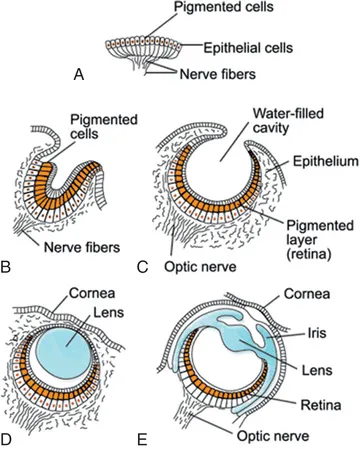
Development of the Eye
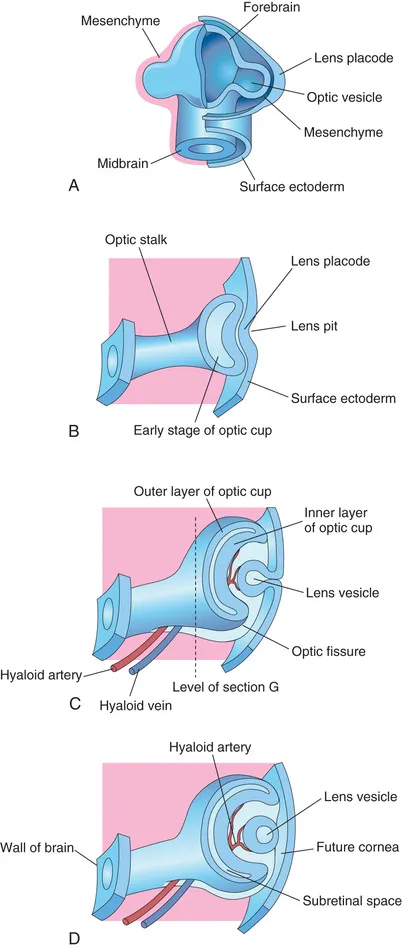
Basic Anatomy of the Eye
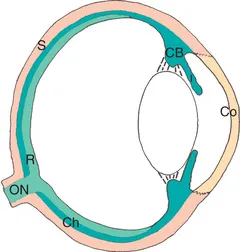
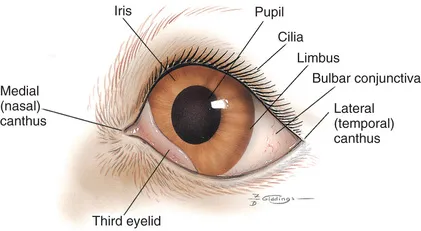

Table of contents
- Cover image
- Title Page
- Table of Contents
- Copyright
- Contributors
- Dedication
- Preface and Acknowledgments
- 1 The Eye and Vision
- 2 The Ophthalmic Examination and Diagnostic Testing
- 3 Ophthalmic Medications and Therapeutics
- 4 Principles of Ophthalmic Surgery
- 5 Diseases of the Orbit
- 6 Diseases of the Eyelids
- 7 Diseases of the Conjunctiva
- 8 Diseases of the Third Eyelid
- 9 Diseases of the Lacrimal System
- 10 Diseases of the Cornea and Sclera
- 11 Diseases of the Uvea
- 12 The Glaucomas
- 13 Diseases of the Lens
- 14 Diseases of the Vitreous
- 15 Diseases of the Retina
- 16 Neuroophthalmic Diseases
- 17 Ophthalmic Emergencies
- 18 Equine Ophthalmology
- 19 Livestock Ophthalmology
- 20 Exotic Pet and Avian Ophthalmology
- Appendix Breed Predisposition to Eye Disorders
- Glossary
- Index